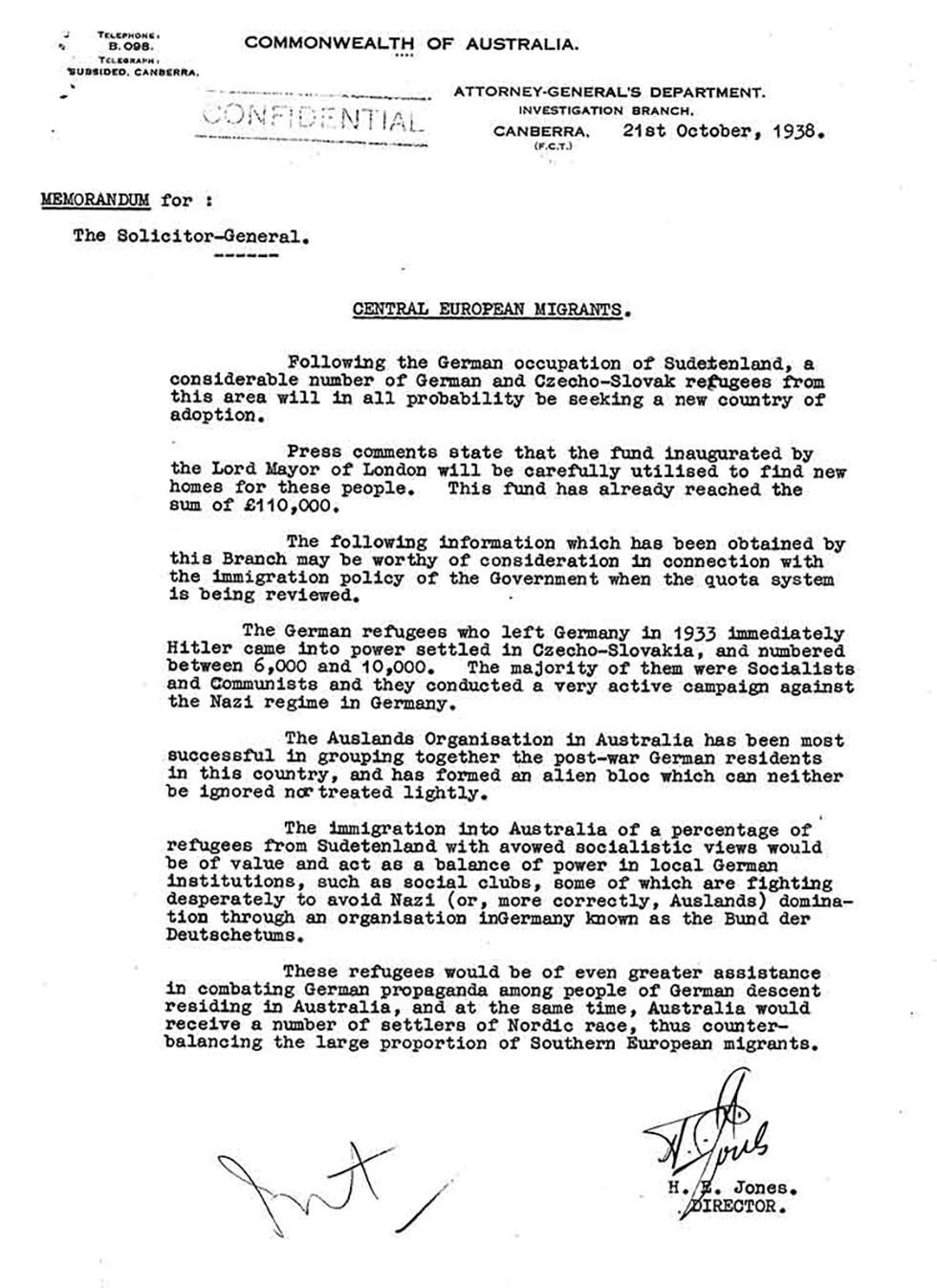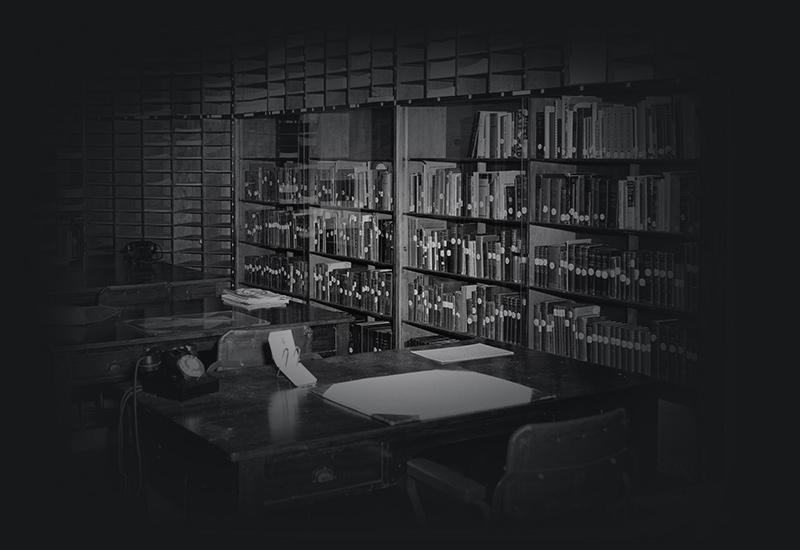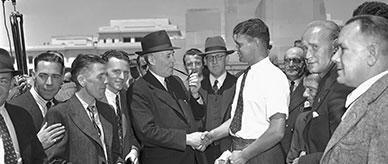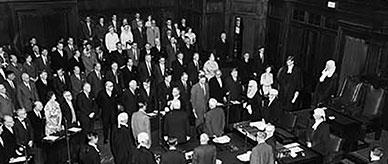


Transcript
[Letterhead: 'COMMONWEALTH OF AUSTRALIA', 'ATTORNEY-GENERAL'S DEPARTMENT', 'INVESTIGATION BRANCH.']
[Stamped:] CONFIDENTIAL
21st October, 1938.
MEMORANDUM [underlined] for:
The Solicitor-General.
[Underlined heading:] CENTRAL EUROPEAN MIGRANTS
Following the German occupation of Sudetenland, a considerable number of German and Czecho-Slovak refugees from this area will in all probability be seeking a new country of adoption.
Press comments state that the fund inaugurated by the Lord Mayor of London will be carefully utilised to find new homes for these people. This fund has already reached the sum of £110,000.
The following information which has been obtained by this Branch may be of consideration in connection with the immigration policy of the Government when the quota system is being reviewed.
The German refugees who left Germany in 1933 immediately Hitler came into power settled in Czecho-Slovakia, and numbered between 6,000 and 10,000. The majority of them were Socialists and Communists and the conducted a very active campaign against the Nazi regime in Germany.
The Auslands Organisation in Australia has been most successful in grouping together the post-war German residents in this country, and has formed an alien bloc which can neither be ignored nor treated lightly.
The immigration into Australia of a percentage of refugees from Sudetenland with avowed socialistic views would be of value and act as a balance of power in local German institutions, such as social clubs, some of which are fighting desperately to avoid Nazi (or, more correctly, Auslands) domination through an organisation in Germany known as the Bund der Deutschetums.
These refugees would be of even greater assistance in combating German propaganda among people of German descent residing in Australia, and at the same time, Australia would receive a number of settlers of Nordic race, thus counterbalancing the large proportion of Southern European migrants.
[Handwritten signature:] H. Jones
H. E. JONES
Director
[Handwritten at bottom of page:] Int
About this record
This confidential memorandum was sent to the Solicitor-General on 21 October 1938 seeking refuge for central European migrants against German occupation.
Related themes
Need help with your research?
Learn how to interpret primary sources, use our collection and more.



